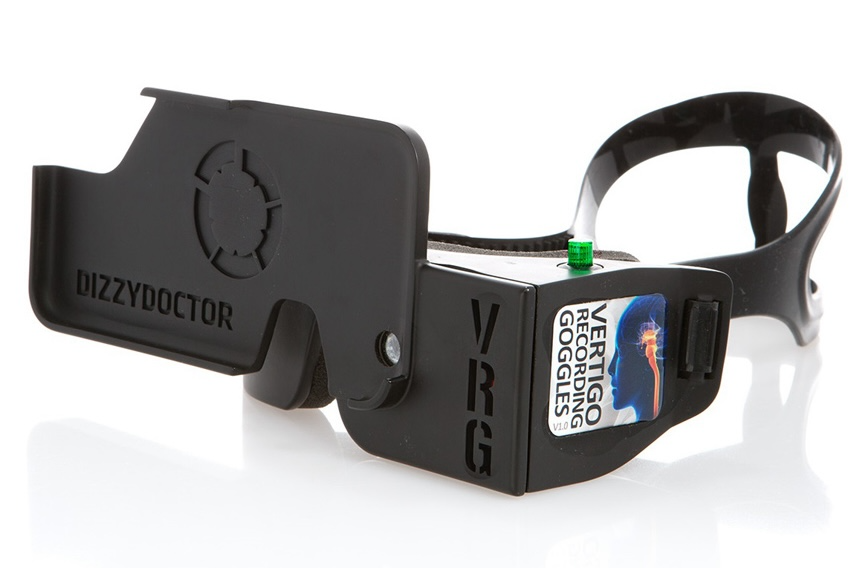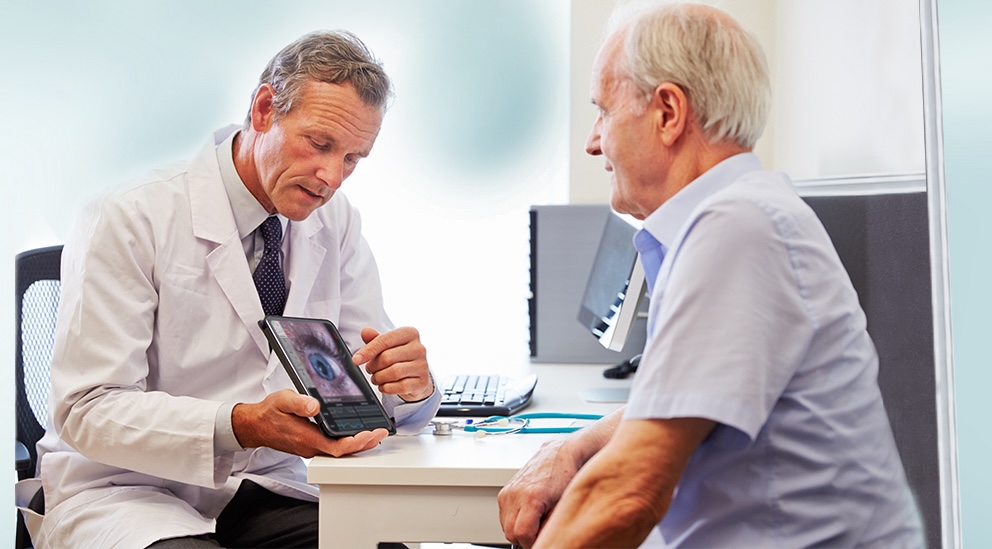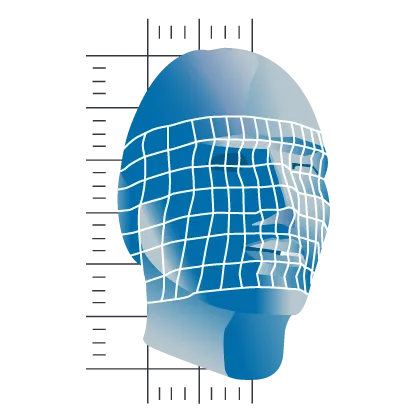DizzyDoctor Goggles:
Revolutionizing the Diagnosis and Treatment of Balance Disorders


Introduction
For individuals struggling with balance disorders and dizziness, finding effective treatment options can be challenging. However, the landscape of vestibular diagnosis and therapy has been transformed with the advent of innovative tools like the Dizzy Doctor goggles, offering new hope and solutions.
What are the Dizzy Doctor Goggles?
The Dizzy Doctor goggles are a groundbreaking piece of diagnostic equipment designed to aid in the assessment and management of balance disorders, including vertigo and dizziness. These goggles leverage advanced technology to accurately measure and analyze eye movements, which are crucial indicators of vestibular function.
Developed by leading neurologist Dr. Ian Purcell, the goggles represent a significant leap forward in vestibular medicine. Dr. Purcell's extensive research and clinical experience have culminated in the creation of this device, aiming to enhance the precision and effectiveness of balance disorder diagnoses.
How do the Dizzy Doctor Goggles Work?
The Dizzy Doctor goggles function by employing sophisticated sensors and imaging technology to monitor the eyes' responses to various stimuli. In patients with balance disorders, abnormal eye movements can reveal disruptions in vestibular function.
During a diagnostic session, the patient wears the goggles while being exposed to specific visual or physical stimuli. The goggles record the eye movements, and the built-in software analyzes the data in real-time, providing the clinician with valuable insights into the patient's vestibular health.
This technology allows for the identification of specific types of balance disorders, enabling targeted treatment strategies. It significantly reduces the diagnostic ambiguity often associated with these conditions, offering a clearer path to rehabilitation.
What are the Benefits of the Dizzy Doctor Goggles?
The Dizzy Doctor goggles offer several advantages over traditional diagnostic methods, including:
- Precision: The ability to accurately track and analyze eye movements results in more precise diagnoses, tailoring treatment plans to individual needs.
- Efficiency: Rapid data analysis facilitates quicker diagnosis, allowing for earlier intervention and treatment.
- Safety: Non-invasive and requiring minimal physical manipulation, the goggles reduce the risk of discomfort or injury during diagnostic procedures.
- Innovation: As a pioneering tool in vestibular diagnostics, the goggles incorporate the latest technological advancements, setting new standards in the field.

During an attack of vertigo, a patient will be able to use the DizzyDoctor Vertigo Recording Goggles (VRG) to obtain recordings of their eye movements in the four proper Dix-Hallpike testing positions. The DizzyDoctor App is designed to not only accurately walk the patient through each position by using step-by-step voice commands, but it also utilizes the smart phone’s internal gyroscope to detect and verify the patient’s head is accurately positioned and held still during the recording time. Once they have assumed the proper testing position, the video recording will begin and the DizzyDoctor application will start a verbal countdown until each recording session is complete.
The first recording is taken in the Dix-Hallpike right position. To assume this position, the patient must first turn their head 45 degrees to the right. They will then be instructed to lie back until their head is approximately 30 degrees hanging off the edge of table or bed but still also keeping their head approximately 45 degrees to the right. Once the DizzyDoctor App verifies the patient is in the correct position, the patient’s smart phone camera will begin to obtain a 10 second video eye recording. After the Dix-Hallpike right position testing is complete, the patient will be instructed to return to an upright seated position, with their head centered straight ahead, for another 10 second video eye recording. The DizzyDoctor App will then verbally instruct and guide the patient into the proper Dix-Hallpike left position. To assume this position, the patient will remain sitting and then first turn their head 45 degrees to the left. They will then be instructed to lie back until their head is 30 degrees off the edge of table or bed but still also keeping their head approximately 45 degrees to the left. Once the DizzyDoctor App verifies the patient is in the correct position, the patient’s smart phone camera will begin to obtain another 10 second video eye recording. After the Dix-Hallpike left position testing is complete, the patient will be instructed to return to an upright seated position, with their head centered straight ahead, for another 10 second video eye recording.
After all four testing positions have been completed, the recordings are then automatically stored onto the patient’s smart phone. The raw footage may then be reviewed on the patient’s phone. The eye recording session will automatically upload to the patient’s portal on the DizzyDoctor website when the iPhone has access to an internet connection. The recordings on the DizzyDoctor Website will be presented with eye tracking data as well as iPhone gyroscopic stability data during video playback. The patient may log on to view their data at any time or may give temporary access to their health care provider for viewing privilege. These recordings may later be viewed by the patient’s physician or other health care provider to aid in their diagnosis and treatment.

The Process
When a patient is experiencing an acute episode of dizziness, they will be able to use the Vertigo Recording Goggles (VRG) to obtain recordings of their eye movements in the four proper Dix-Hallpike testing positions. The DizzyDoctor app will guide the patient with voice commands while using the smart phone’s internal gyroscope to verify that the patient is in the correct recording position. The DizzyDoctor App, with use of the Vertigo Recording Goggles, also uses the smart phone’s camera to accurately record the patient’s pupil and iris movement patterns during head positioning protocols. After all four testing positions have been performed, the DizzyDoctor App will notify the patient that testing is complete and the recording session will end.
It is very important for a physician to review these recordings so that a correct diagnosis can be made. The DizzyDoctor System is a unique innovation that connects patients and physicians to further aid in a patient’s medical care. For a physician to make an accurate diagnosis, they need to see a patient’s eye movements at the time a patient is symptomatic. As many patients experience episodes of dizziness when they are not in a clinic or hospital, the Vertigo Recording Goggle and DizzyDoctor App allow a patient to obtain real time data that can be viewed by a physician at a later time. It is important that the Physician is comfortable that the eye movement recordings were collected properly. The DizzyDoctor system ensures this utilizing voice commands, internal gyroscopic positioning verification and head stability data collection during the recording session. Patients may either be instructed by their physician as to when to use their VRGs or they may use them at their own discretion when symptomatic.
To get started, the patient first needs to purchase a pair of Vertigo Recording Goggles and download the DizzyDoctor App in the Apple Store. They will then create a patient account on the DizzyDoctor website (www.dizzydoctor.com). Physicians also create an account so that they can have access to their patient’s videos through the physician portal. Every time a patient obtains a recording during an episode of dizziness, the video is automatically uploaded into the patient’s account on the DizzyDoctor website. This video is then locked from viewing until a small fee is paid. The patient simply has to log on to their patient portal account and pay the small fee to unlock their videos. Once unlocked, each video remains stored in the patient portal for viewing at any time either by the patient or the patient’s chosen health care provider.
To aid in the diagnostic process, a patient may present to their physician’s office after an episode of dizziness to directly review their VRG eye movement recordings with their physician. The physician may access the patient’s videos by logging into their physician portal and then looking up a patient by entering the patient’s username and password as provided real-time by the patient. The physician and patient can then review each eye movement recording together. By using both the patient’s history, symptom description, other vestibular and audiometric tests, and the real-time DizzyDoctor system eye movement recordings, the physician will be able to make a more accurate diagnosis and further recommendations for an optimal treatment plan.

.jpg)